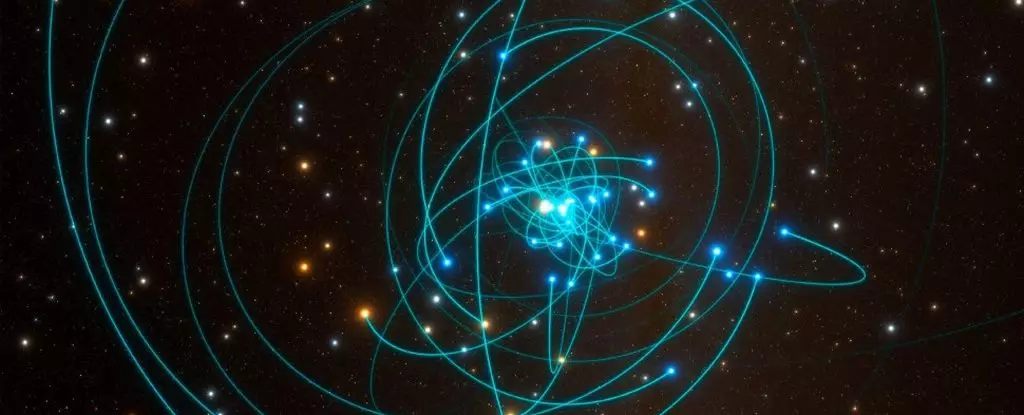In the annals of history, tales of individuals resorting to extreme measures in search of eternal youth have captured the imagination of many. One such story revolves around the 16th-century Hungarian countess Elizabeth Báthory, who was rumored to have bathed in the blood of young girls to maintain her beauty. While the authenticity of these claims remains dubious, the concept of pursuing immortality through dark and arcane methods continues to fascinate. However, a recent study suggests that the rejuvenating powers of cosmic cannibalism may prove to be more than just a macabre myth.
The Milky Way’s galactic center serves as a bustling hub of stellar activity, where stars whiz and whirl around a supermassive black hole of staggering proportions. Amidst this chaos, collisions and interactions between stars are commonplace, leading to a phenomenon known as cosmic cannibalism. Through mergers and grazing collisions, certain stars gain an influx of hydrogen, giving them the appearance of youth and vitality, despite their older origins. These “zombie stars” consume their neighbors in a celestial dance of rejuvenation, akin to the fictional vampires of lore.
Astrophysicists like Sanaea Rose of Northwestern University have delved into the intricacies of stellar interactions within the galactic center through advanced simulations. By studying the outcomes of these collisions, researchers have discovered a distinct correlation between proximity to the black hole and the fate of colliding stars. Stars within a close range of 0.01 parsecs tend to engage in grazing collisions, preserving their integrity while shedding outer material. In contrast, stars beyond this boundary experience violent collisions that result in the merging of stellar bodies, creating larger, more youthful stars with shortened lifespans.
The process of cosmic cannibalism raises intriguing questions about the composition of the star population in the galactic center. The absence of old red giant stars in this region can be attributed to the mass loss incurred during collisions and mergers, which favor the creation of massive, short-lived stars. This trade-off between rejuvenation and lifespan underscores the dynamic nature of stellar evolution in a densely crowded and gravitationally volatile environment like the galactic center. Further research and observations are needed to unravel the complexities of these processes and illuminate the unique dynamics at play within this cosmic cauldron.
As we peer into the churning heart of the Milky Way’s galactic center, we are confronted with a cosmic spectacle of stellar collision and rejuvenation. The phenomenon of cosmic cannibalism offers a glimpse into the transformative power of stellar interactions, where aging stars are reborn through mergers and collisions, acquiring a facelift of hydrogen and vitality in the process. While the allure of eternal youth may remain an elusive dream for humanity, the stars themselves partake in a celestial dance of renewal, shaping the vibrant tapestry of the galactic center. Through continued exploration and investigation, we may unlock the secrets of cosmic cannibalism and gain a deeper understanding of the cosmic forces that govern our universe.

Leave a Reply